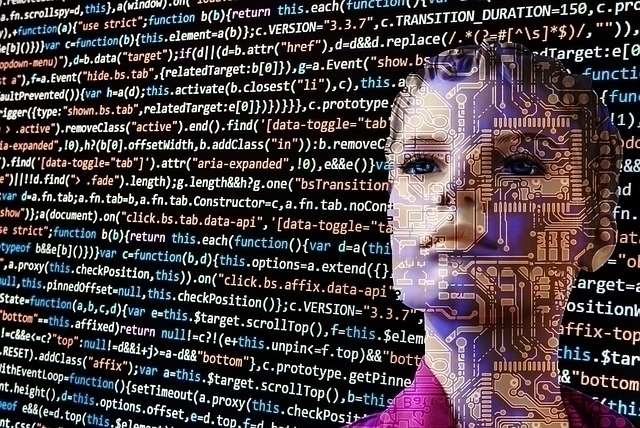Jobs of the Future
Recent surveys indicate that almost half of the jobs existing today will disappear in the forthcoming decades

România Internațional, 26.09.2018, 12:10
Recent surveys
indicate that almost half of types of jobs existing today will disappear in the
forthcoming decades. Technology and automation will replace human labor, the labor
market will undergo frequent changes, and people will have to adjust as they
go. The employees of the future will have online profiles, they will be more
connected, more mobile and more flexible, says an NGO called INACO – the
Initiative for Competitiveness, in its Guide
to the Jobs of the Future released
this summer. The report, based on the latest findings of research into the
economy of the future, looks at current trends in technology and predictions
regarding tomorrow’s labor market and economy.
Andreea Paul, coordinator of the
project and president of INACO, explains:
All the
children who begin school today will be facing, when they grow up, a completely
different labor market from what we have today. Two-thirds of the jobs in our
society will be transformed. And this is only natural, because new technologies
have emerged, which completely reset some sectors, from agriculture to trade,
from industrial production to medicine, and common occupations, such as driver,
might disappear very soon. Physical work will be replaced by creative jobs.
Indeed, a very good motto is gaining popularity as far as tomorrow’s jobs are
concerned, and it goes like this: ‘work smart, instead of work hard’. This
means that all jobs involving physical effort, repetitiveness, hazards and so
on will be automated, computerized, and this will simplify everyday lives.
The authors of
the guide believe that the Romanian education system fails to properly inform
and train the young for the professions of tomorrow. This is precisely why the
community of experts with whom INACO has worked proposed a complex project to
the Bucharest District 3 City Hall. The project is designed to make students of
13 Bucharest high schools familiar with the labor market of the future. The Guide to the Jobs of the Future will be
the starting point for a number of interactive, creative workshops, non-formal
education sessions coordinated by INACO experts who will encourage students’
involvement and help them choose a line of work.
Andreea Paul:
Our
target for this year is to get into direct contact with 1,000 youths, parents
and teachers, to show them what the professions of the future will be like,
which professions are changing or even going to disappear, what skills and
abilities employers will be looking for and, more importantly, how they can
acquire these skills. These are the key questions that the INACO expert
community seeks to answer in a simple, clear and reader-friendly manner, in its
presentation of the Guide to the Jobs of
the Future available online at www.inaco.ro.
The Guide can be accessed by anyone and viewers are encouraged to click on each
picture and discover short videos linked to it. All that points to the fact that everything we say has already been
reported somewhere else, in a remote corner of the world, which is much more
advanced than our country, and which emphatically sets the trend,
technology-wise, for the entire world economy. It is such trends that we need
to take into account. We’re speaking about the 4.0 digital revolution. Whether
we speak about robotization, of 3D printers, block-chain systems, virtual
reality, resources of the future, means of transport of the future – all that
forces us to recalibrate ourselves, to reset our education but also our
investment in our own lifelong professional training
INACO specialists have already made the
first steps so that youngsters may keep abreast of the technological progress
of the future. They have donated 3D printers and 10 kilos of consumables to students
of a vocational school in a village in Iasi county, and to students of the
Ionita G. Andron Technological High-school in Negresti Oas.
With details about
that, here is the high-school principal Hotca Ovidiu Mihai.
Children are already aware
of the groundbreaking changes that have occurred. One example of cutting-edge
technology is this 3D printer that we have received, and we explain to our
pupils how far we can go in terms of technology. I saw there are 3D printers
that are even capable of building lodgings, so children are very interested in
that. In my opinion, and if we want to come full circle, these cutting-edge
technologies should be used at industrial level as well.
Extremely sought-after in the future will be
people capable to fill in vacancies in the field of assistance for elderly
people, spatial tourisms specialists, drone controllers, or people working in services
for robots programming and monitoring.
Also in high demand are physiotherapists, kinesiotherapists, people working
in the field of non-conventional energy, the INACO survey has also shown. The
aforementioned survey also highlights that the new technologies will create
millions of jobs and that completely new fields are highly likely to emerge.
Speaking about that, here is Andrea Paul once again:
Some jobs are highly likely
to completely disappear in the near future, such as door to door sales or operators
in call centers. Loan officers will totally disappear in the future, because of
the 98% automation of this market, front desks will disappear, the cashier
service will be computerized, 90 per cent of the taxi drivers will be replaced
by artificial intelligence in the future, according to specialists from Oxford
University, while 80 per cent of the fast-food cooks will lose their jobs.
Today McDonald’s has large-scale programs for the robotization of their own
kitchens. Instead, nurses, dietitians, nutritionists, surgeons – they cannot be
replaced through an automation process, save for a very small percentage of
them.
Although
robotics has not been included in Romanian school curricula, Romanian
high-school students, so passionate about the technology of the future, are among
the world’s best in contests where artificial intelligence seems to be gaining
ground. For instance, at the International Robotics Olympiad in Mexico, the
Romanian high-school delegation won the highest distinctions up for grabs in
the contest, stepping on top of the podium in the nations’ competition.






























